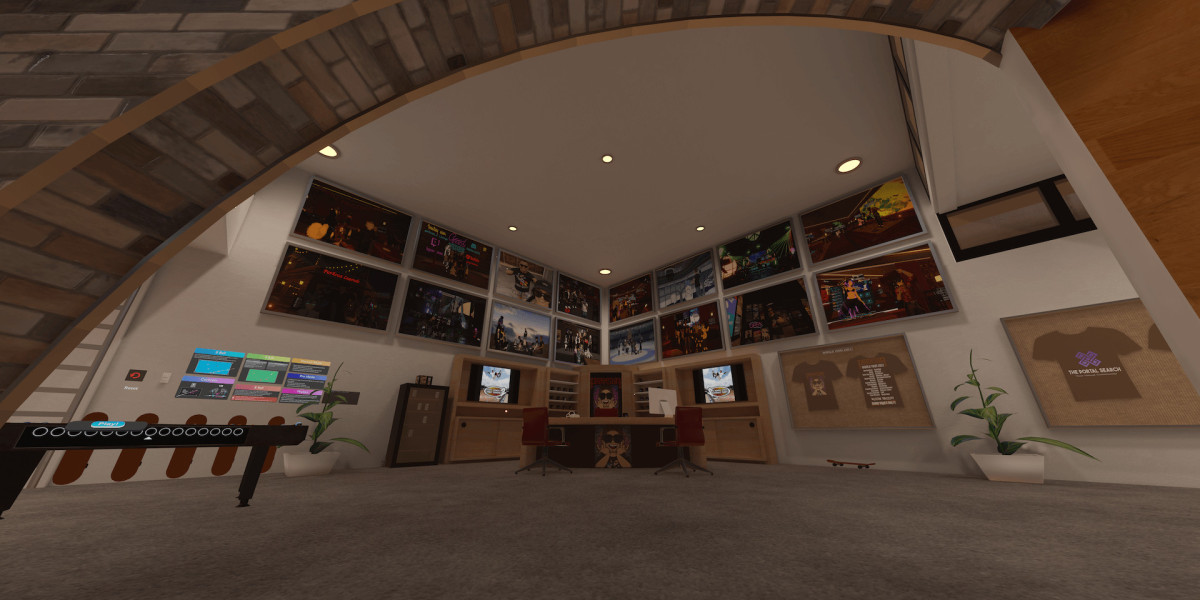Augmented Reality (AR) represents a groundbreaking technology that merges digital content with the real world, enhancing our perception and interaction with our surroundings. Unlike Virtual reality (VR), which immerses users in entirely virtual environments, AR overlays digital elements onto the physical environment in real-time. This article explores the transformative impact of AR across various industries, its applications, benefits, and the innovative contributions of The Portal Search in delivering immersive AR experiences.
Understanding Augmented Reality (AR)
Augmented Reality enhances the real-world environment by superimposing digital information such as images, videos, and 3D models onto our physical surroundings. AR technology uses devices like smartphones, tablets, Augmented Reality (AR) glasses, and headsets equipped with cameras, sensors, and software to detect and interpret the real world, enabling digital content to interact seamlessly with physical objects.
Key Components of AR
- AR Devices: Devices such as smartphones and AR glasses equipped with cameras and sensors capture the user's surroundings and overlay digital content in real-time.
- AR Software: Sophisticated software processes sensory data and renders digital content, aligning it with the user's perspective to create a seamless AR experience.
- Marker-based and Markerless Tracking: AR systems use markers or rely on spatial mapping and computer vision to anchor digital content accurately within the physical environment.
Applications of Augmented Reality (AR)
Augmented Reality has diverse applications across multiple industries, transforming how we perceive, interact with, and utilize digital information in real-world contexts.
Gaming and Entertainment
AR has revolutionized gaming and entertainment by integrating virtual elements into the real world. Games like Pokémon GO use AR to allow players to capture virtual creatures overlaid on real-world locations, creating immersive gaming experiences that encourage exploration and interaction.
Education and Training
In education, AR enhances learning by providing interactive and visual learning experiences. Students can interact with 3D models of complex subjects such as anatomy or historical artifacts, fostering engagement and improving understanding. AR is also used in professional training to simulate real-world scenarios, allowing learners to practice skills in a controlled virtual environment.
Retail and E-commerce
AR is transforming retail and e-commerce by enhancing the shopping experience and bridging the gap between online and offline retail. AR applications allow customers to visualize products in their own space using smartphones or AR glasses, facilitating informed purchasing decisions and reducing product returns.
Healthcare
In healthcare, AR is used for medical training, surgical planning, and patient care. Surgeons use AR to overlay medical imaging data onto a patient's body during surgery, enhancing precision and improving patient outcomes. AR also aids in medical education by providing immersive simulations of medical procedures and conditions.
Real Estate and Architecture
AR is revolutionizing the real estate and architecture rendering industries by offering virtual property tours and architectural visualizations. Potential buyers can use AR apps to visualize renovations or furniture placement in real-time, while architects can present designs to clients in a contextualized manner, enhancing communication and decision-making.
The Benefits of Augmented Reality (AR)
Augmented Reality offers numerous benefits that make it a valuable tool for enhancing user experiences and driving business innovation.
Enhanced User Engagement
AR enhances user engagement by providing interactive and immersive experiences that captivate and entertain users. The ability to overlay digital content onto the real world creates novel and compelling interactions that keep users engaged and interested.
Improved Decision-making
AR enables better decision-making by providing stakeholders with contextualized information and visualizations. Whether in retail, architecture, or healthcare, AR helps users make informed decisions by visualizing how choices will impact the real-world environment.
Enhanced Learning and Training
AR enhances learning and training outcomes by providing hands-on experiences and simulations that improve retention and understanding. Interactive AR applications enable learners to practice skills and scenarios in a safe and controlled environment, enhancing learning effectiveness.
Increased Efficiency and Productivity
In industrial settings, AR improves efficiency and productivity by providing real-time information and guidance to workers. AR-enabled smart glasses overlay instructions, diagrams, and data onto the user's field of view, reducing errors and improving workflow efficiency.
The Portal Search: Innovating with AR Technology
The Portal Search is a leader in AR development, specializing in creating immersive and interactive AR experiences that redefine how businesses and individuals interact with their environments.
Expertise in AR Development
The Portal Search's team of skilled developers and designers are experts in AR technology, leveraging their expertise to create customized AR solutions for various industries. They collaborate closely with clients to understand their objectives and deliver AR applications that exceed expectations.
Innovative AR Solutions
- AR Visualizations and Simulations: The Portal Search develops AR applications for real estate, architecture, and retail that provide realistic visualizations and simulations. These applications enable users to visualize products, designs, and renovations in their real-world context, enhancing decision-making and customer engagement.
- AR Training and Education: Their AR solutions for education and training provide immersive simulations and interactive learning experiences. From medical simulations to industrial training modules, The Portal Search's AR applications improve learning outcomes and skills development.
- AR Marketing and Brand Engagement: The Portal Search creates AR marketing campaigns and branded experiences that captivate audiences and drive engagement. Their innovative use of AR technology helps businesses differentiate themselves and create memorable customer interactions.
Case Studies and Success Stories
The Portal Search has successfully implemented AR projects across diverse industries, demonstrating their commitment to innovation and excellence. One notable project involved developing an AR retail app for a furniture company, allowing customers to visualize furniture in their homes before purchase. Another success story includes creating an AR training simulation for a manufacturing firm, improving worker skills and operational efficiency.
Conclusion
Augmented Reality is transforming how we interact with digital content by blending virtual elements with the real world. Its ability to overlay digital information onto physical environments creates immersive and engaging experiences across gaming, education, retail, healthcare, and beyond. The Portal Search's leadership in AR development exemplifies the potential of AR to enhance user experiences, drive business innovation, and revolutionize industry practices. As AR technology continues to evolve, its applications will expand, offering new opportunities for creativity, interaction, and problem-solving in the digital age. Embracing Augmented Reality opens doors to a future where virtual and physical worlds seamlessly coexist, enriching our everyday experiences and unlocking new possibilities for innovation.



